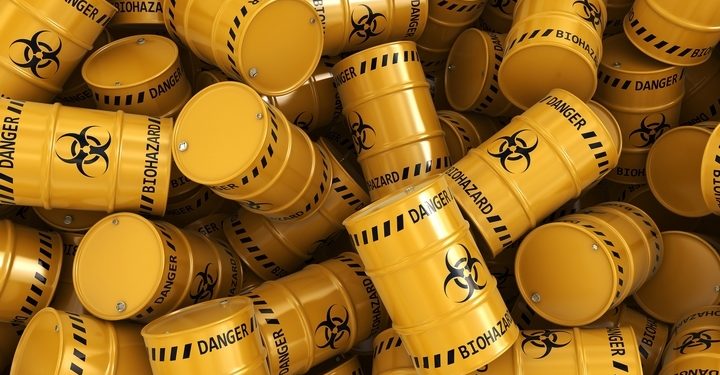4 Tips to Store Hazardous Waste Materials

Working with chemicals requires a lot of precautions and preemptive actions. Proper chemical storage promotes a safe work environment and keeps your company compliant with safety laws. Check out the following four tips to help you safely store hazardous waste materials!
1. Invest In Properly Labeling

Labeling is one of the most effective preemptive safety precautions you can implement in your workplace. Operating without proper labeling puts your employees at risk of dealing with materials they’re not qualified to handle. Without labeling, your staff is left in the dark about the appropriate measures to take in case of accidental exposure. All containers with chemicals must be clearly labeled with the identity of the material and the necessary hazard warnings. It’s a good idea to invest in large, easy to read labels that leave little room for doubt. Running a safe work environment that deals with chemicals starts with taking labeling seriously.
2. Monitor And Maintain A Chemical Inventory

Maintaining a properly organized chemical inventory is essential to staying compliant. Many regulatory agencies require you to keep a regularly updated inventory when your company works with dangerous chemicals. In addition to staying compliant, maintaining an inventory helps you stay organized and reduce inventory overflow. Your inventory should contain the names of the chemicals, where they are stored, how much you have and the hazard information associated with each chemical.
When it comes to storage, centralized storage is highly recommended. While storing chemicals on site is convenient, it’s harder to manage inventories and mitigate safety risks. Chemicals should never be stored on the floor or areas where they can be knocked over. Your chemicals need to be organized by chemical class, compatibility and then alphabetically. Putting some extra time and effort into how you approach chemical storage is an excellent way to help your company become more efficient.
3. Use The Right Type Of Storage Containers

Failing to use the right kind of storage containers can create a ton of safety problems. It’s crucial to assess the chemicals you’re dealing with and determine the proper storage solutions to accommodate the materials.
Containers need to be highly durable and made of materials resistant to weather and corrosion. Quality containers are sealable and prevent the release of invisible chemical mists that can have disastrous health effects.
When it comes to liquid waste disposal, you need a secondary containment system to absolutely ensure there’s no spillage. Investing in the right types of containers is an essential part of keeping your staff safe.
4. Implement Consistent Safety Protocols

Part of working safely with chemicals is getting your entire team on the same page when it comes to safety. The best way to lower risk when working with chemicals is to minimize exposure. Chemicals should only be transported or used when necessary. Looking for safer chemical alternatives is also a way to reduce exposure. Another part of establishing a culture of safety is to enforce the importance of not underestimating risks. The dangers of each chemical in your lab need to be clearly identified and your staff trained on how to handle the chemicals. Finally, you need to enforce proper response measures in case of emergencies. All of your staff should be adequately trained following laboratory standards and local safety standards to help your lab operate at a high level.
All in all, preparation goes a long way when it comes to safely storing hazardous materials. Taking a bit of extra time with the planning process is an excellent way to keep your staff safe and liabilities low. Try using the tips in this blog post to help you organize your work area!


